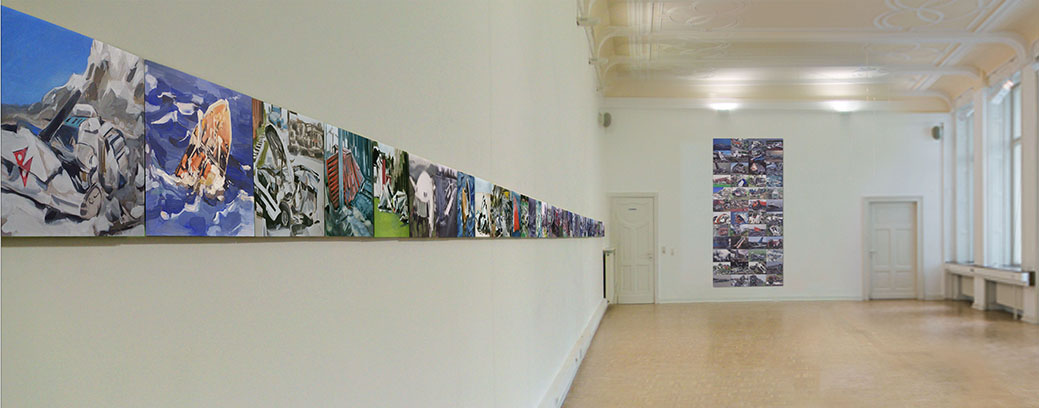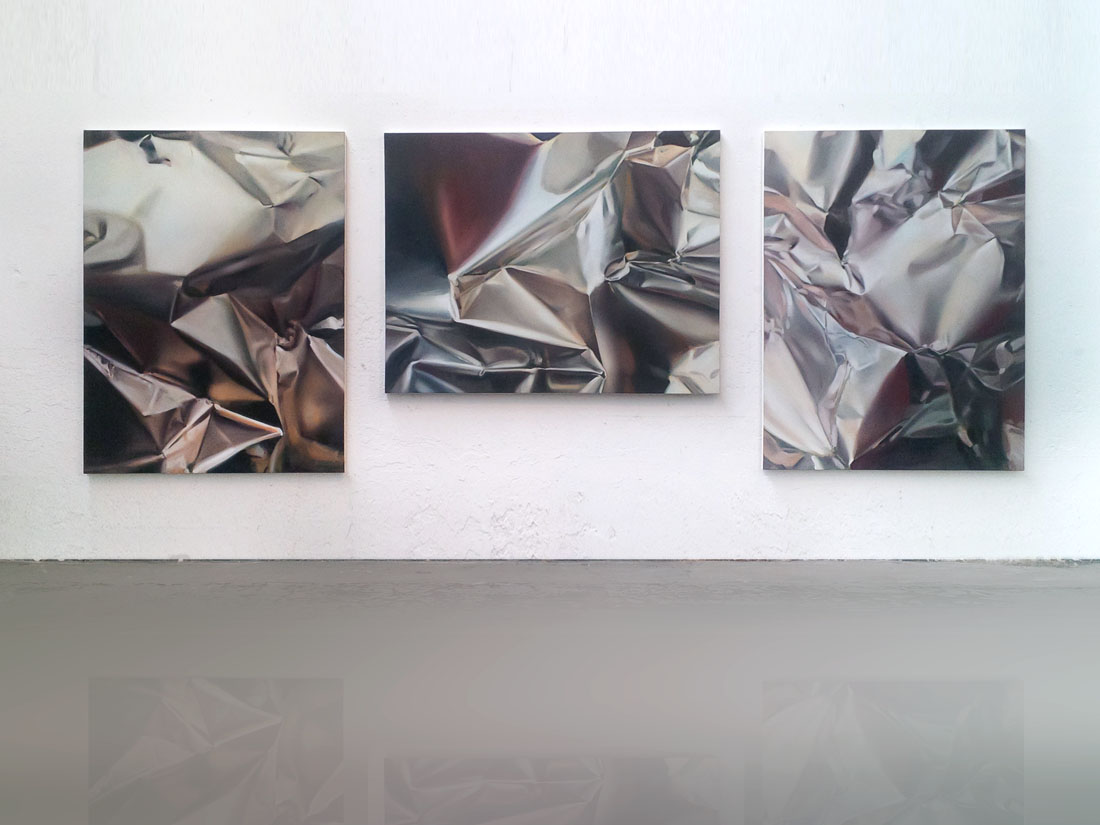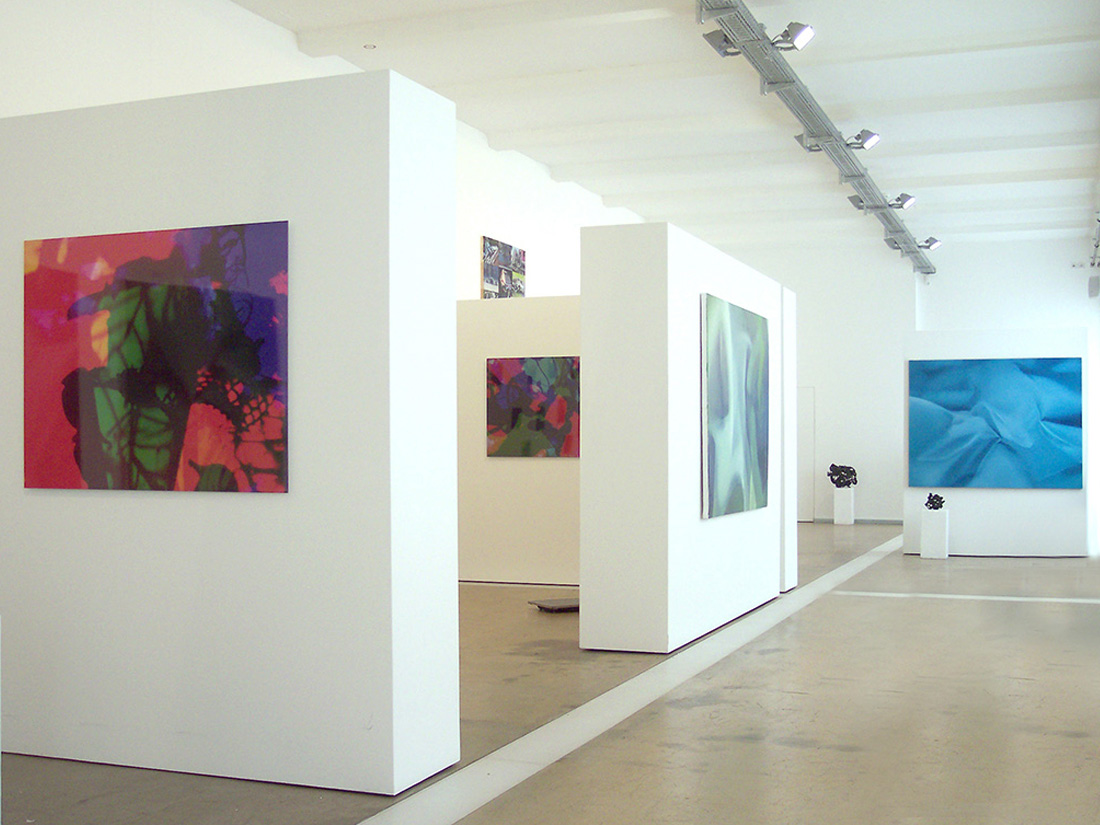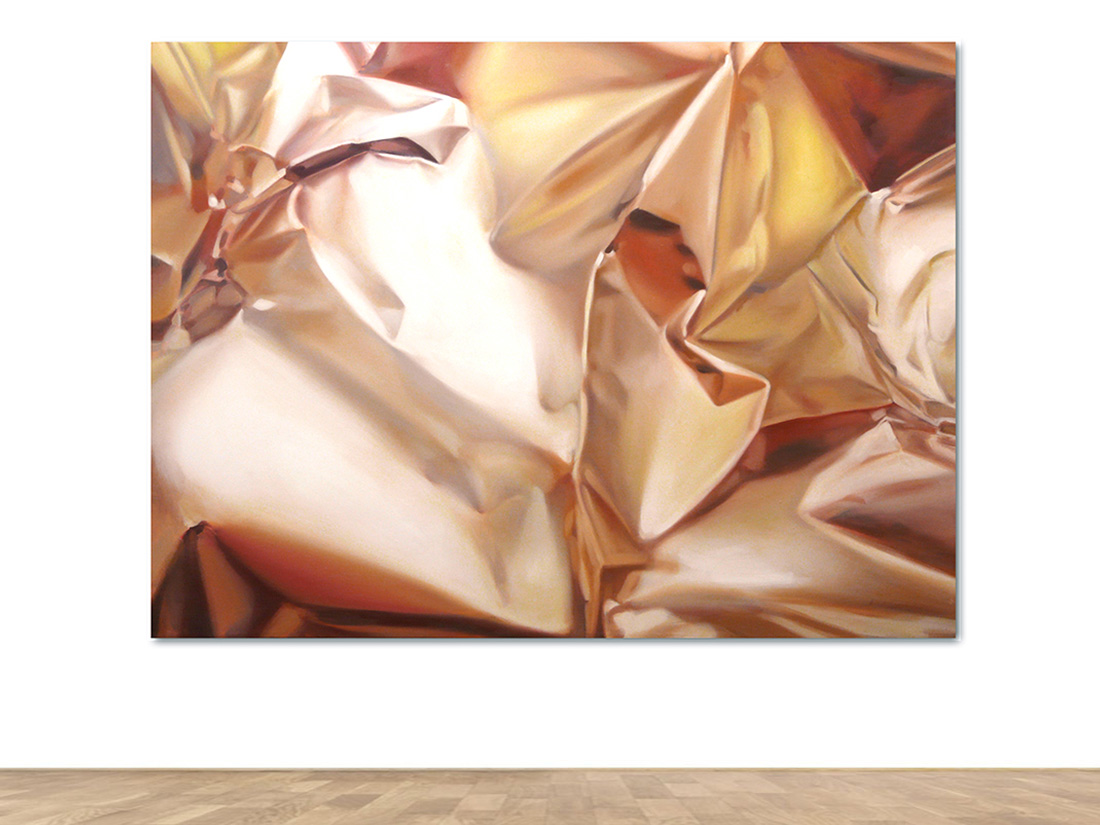The probable always waits for the unprobable
"Rhythm of Statistics" by the Cologne artist R.J.Kirsch at the Bellevuesaal Wiesbaden | 2010
Rhythm of Statistics
Over the entire longitudinal wall of the former dining hall of the Hotel Bellevue on Wiesbaden's Wilhelmstrasse hangs a straight-as-a-line series of small-format images.
The first impression is that these pictures are photographs, but on closer inspection it becomes clear that they are a series of paintings. Rolf Kirsch skilfully and quickly stages vehicle accidents: Airplanes, ships, railway wagons, cars.
Rolf Kirsch's interest has revolved around questions of technological development from the beginning of his artistic engagement.
From the perspective of painting, this turned out to be a clarification of new pictorial techniques.
In addition to photography, which has completely redefined painting since the beginning of the 20th century,
it was primarily the electronic pictorial media, through whose growing presence the painter saw his pictorial work questioned.
The exploration of the material connections of technical pictorial media led to the discussion of the relationship of the media to one another,
but also the theming of the limits and possibilities of technological progress in general.
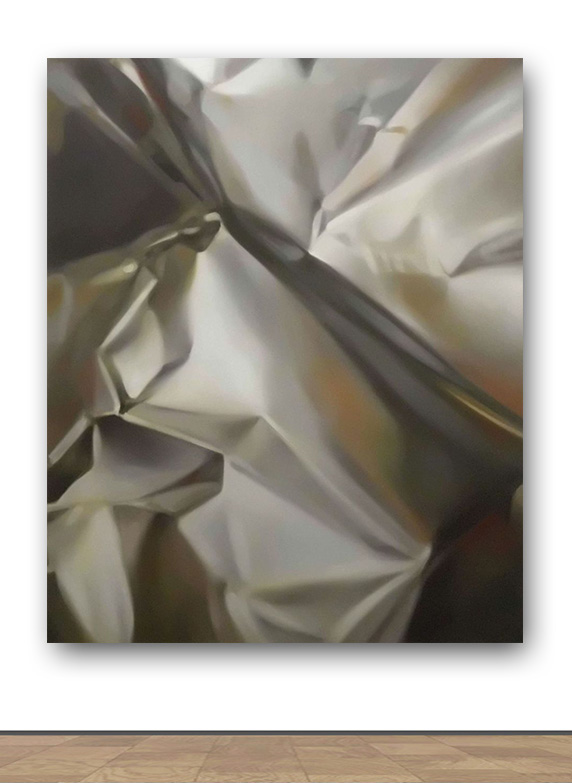
SOFT IMPACT
170 x 130 cm, Oil on canvas, 2014
Against this background, the series of paintings of traffic accidents (these are exclusively traffic accidents)
is a consistent continuation of his studies in this area. As a graduate of the class of Prof. Franz Dank at the cologne artschool
he derives his approach from the concept of still life paintings.
Like a study on foldings, Kirsch investigates the deformation bulges, refractions, and wasted body parts.
The light that is generally as bright as daylight creates a fundamentally cheerful atmosphere, in contrast to the
events. The artistic realization thus supports the timelessness of the standstill, also through the complete absence of
affected persons or rescuers.
And yet the events appear to be located in a time continuum. The eventiness finds its expression in
Titles which reflect the course of the accident in brief protocol formulations. Standstills ranked on a time axis,
discrete points in time that cancel out the illusion of a homogeneous time.
The occupation with being on the road, mobility, the use of vehicles to open up the world thus becomes the main motif in Kirsch's work. Accidents play an important role in this context,
they symbolize the limitations and fragility of our existence, the limits but also the technical feasibility.
In the increasing speed with which the general mobilization of all areas of life is driving forward,
an "aesthetics of disappearance" is founded, which increasingly shifts processes into invisibility.
Through the staging of the monuments of technical failure as "secular" graves, standstill makes technical
sequences are visible again, at least for brief moments, Kirsch's paintings capture the fleeting, objects out of control. In the deformation caused by the kinetic energy directed against the vehicles themselves
the forces are visible whose mastery has long since become a risky gamble.
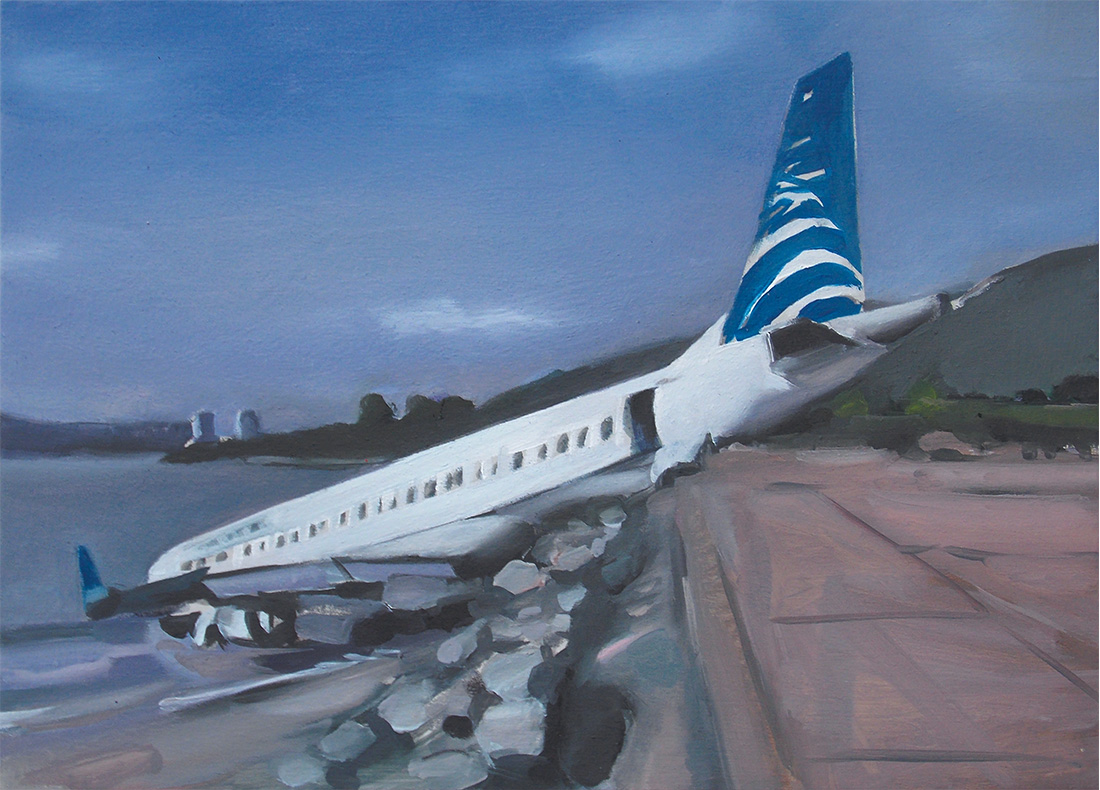
Rhythm of Statistics
Oil on wood, 25 x 35 cm, 2013
Collisions
While the paintings from the series "Rhythm of Statistics" presented a scenic view of the accident scenarios, the focus now moves ever closer to the object, the newer paintings show the distortions and foldings at close range: Hides and skins of vehicles, vehicles, technical equipment,
which in deformation has become an expression of kinetic energy. Already in the series "Collisions" (2008-2009)
Kirsch begins to examine individual components of such damaged vehicles for their pictorial usefulness.
In further development, this theme is reduced to the aspects relevant to painting.
In large-format paintings, the painter abstracts from the concrete occasion.
Abstracts
Beyond the self-explanatory intention of dealing with the relationship between painting and technical pictorial media,
the ABSTRACTS offer a further reading of his painterly approach, as they see themselves as analogies to the
classic drapery, as commentaries in a historical context. Kirsch uses techniques of old master painting, which he adapts to his current needs.
In large swings and arcs he emphasizes the distinctly performative character of his painting style,
whose generosity is due to the painterly movements that take it out of the way.
LEERLAUF
2. September bis 26. September 2010
Bellevuesaal Wiesbaden
Max Scholz, Köln | R. J. Kirsch , Köln
Malerei, Installation
Ausstellungseröffnung: Donnerstag, 2. September, 19.00 Uhr
Einführung: Ulrich Meyer-Husmann


